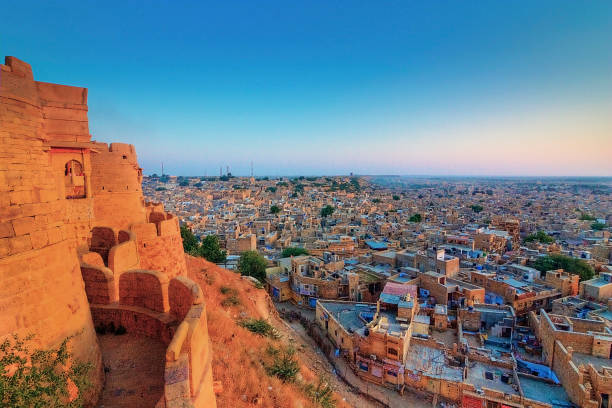Junagarh Fort in Bikaner
Junagarh Fort is one of the famous testaments of Bikaner. Famous for its massive structure and architectural designs, the fort is spread over a sprawling area that is bounded by 986 metres long wall.

Among the most immaculately crafted Rajasthan heritage forts, Junagarh deserves a special mention. Junagarh Fort is one of Rajasthan's few forts, which are not built on a hilltop. The modern city of Bikaner has grown and developed around the fort. Junagarh Fort is one of the famous testaments of Bikaner. Famous for its massive structure and architectural designs, the fort is spread over a sprawling area that is bounded by 986 metres long wall.
Junagarh Fort is an impressive fort of Northern India famous for its magnificent architecture, design, and decoration. This imposing fortress was built in1593 A.D by Raja Rai Singh, Army General of the Mughal Emperor Akbar.
He was also the sixth ruler of the city of Bikaner, who ruled it from 1571 to 1612 AD. This fort is attacked several times but never been conquered.
Only Kamaran Mirza, who was the son of Babur was able to capture the fort but couldn’t even retain his hold for more than one day.
The structures built within the Junagarh fort are the palaces and temples, which are made of red sandstone and marble.
The palaces are described as picturesque with their assortment of courtyards, balconies, kiosks, and windows displaying the original lifestyle and way of living of the Maharanas of Rajasthan.
The massive fort built in the plains of Bikaner has a rectangular layout with a peripheral length of 1,078 yards. The fort has seven gates for several palaces, pavilions and many temples of Hindu and Jain religions – the earliest dated to the 16th century.
The beauty of the fort lies in the stone carving done in red and gold-colored sandstones. The interiors of the palaces are decorated and painted in traditional Rajasthani style.
The Junagarh Palace has a large number of rooms, as every king built his own separate set of rooms.
The design and architecture of these rooms and the entire palace are dominated by Gujarati, Mughal and Rajputana architecture and design.
Chandra Mahal has the most luxurious room in the palace, which houses gold plated divinities and paintings inlaid with costly stones as it was the bedroom of the Maharaja.
In the Badal Mahal you can see the paintings of Shekhawati Dundlod rulers paying respects to the Maharaja of Bikaner in different types of turbans. Photos of people standing on nails, wood, swords, and saws are also depicted showing an example of faith.
This fort is a magnificent fort known for its design, decorations and constructions. Some of the other known attractions of this fort are Ganga Mahal, Badal Mahal, Zenana quarters, Har Mandir and more.
Take a look at the historic pieces of art and paintings that are displayed at the museum.
Visit the armoury section which houses the widest collections of weapons from the medieval age.
Take a look at the silver carriages and the carts that the royals of Rajasthan used while travelling from one place to another.
Wonder at the incredible zari work on the royal clothes.
Click photographs outside the museum while posing in the gorgeous Rajasthani clothes at a nominal charge.
To beat the heat of the desert land of Rajasthan, it is recommended that the tourists visit the fort between November and February to enjoy a pleasant weather.
